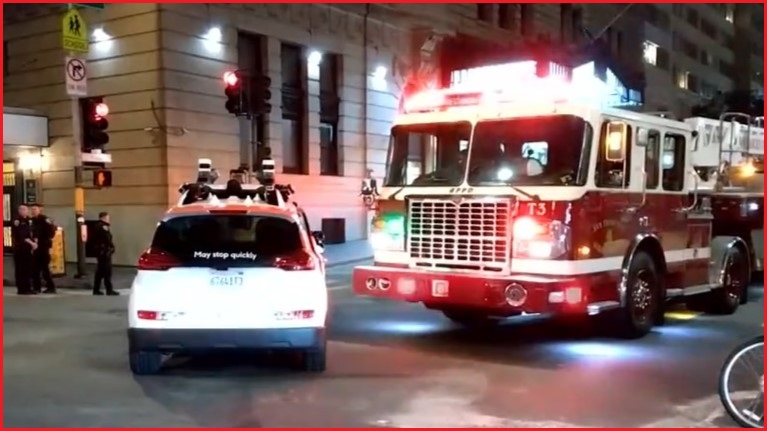The war of words between San Francisco emergency services and ‘robotaxi’ autonomous vehicle (AV) operators has taken a grim turn, with the death of a motor vehicle accident victim being blamed on delays caused by two Cruise AVs blocking the path of an ambulance.
After picking up the injured person – who was hit by a car and suffered what a San Francisco Fire Department (SFFD) report called “significant left lower extremity injuries” – the ambulance was reportedly stuck behind two AVs, operated by General Motors-owned operator Cruise, that “had stopped and were not moving or leaving the scene”.
“The patient was packaged for transport with life threatening injuries, but we were unable to leave the scene initially due to the Cruise vehicles not moving,” the report says, noting that the patient died around 20 minutes after arriving at Zuckerberg San Francisco General Hospital.
The robotaxi delay, “no matter how minimal, contributed to a poor patient outcome, delaying the definitive care required in severe trauma cases,” the report notes. “The fact that Cruise autonomous vehicles continue to block ingress and egress to critical [emergency] calls is unacceptable.”
He said, it said
Complementing a growing state list of AV collision reports, the incident is one of dozens of SFFD incident reports outlining the everyday clashes between emergency workers and robotaxis that are randomly blocking streets all over San Francisco.
During a 21 August incident, for example, a SFFD crew ran a fire hose across the street to access water from a hydrant; although human drivers correctly U-turned to avoid the scene, a Cruise AV drove over the hose – a traffic offence in California – before turning a corner, stopping, and blocking the road for 45 minutes until a worker showed up to remove it.
Other reports have documented AVs stopping behind and next to fire trucks, preventing crews from removing essential equipment; driving dangerously close to emergency crews working at accident scenes; blocking traffic near a construction zone, forcing emergency crews to drive over traffic cones to pass; and more.
Yet Cruise spokesperson Hannah Lindow disputed SFFD assessments that the robotaxi was to blame, telling the San Francisco Chronicle that video from the car’s cameras showed that “throughout the entire duration the [AV] is stopped, traffic remains unblocked and flowing to the right of the AV.”
“The ambulance behind the AV had a clear path to pass the AV as other vehicles, including another ambulance, proceeded to do. As soon as the victim was loaded into the ambulance, the ambulance left the scene immediately and was never impeded from doing so by the AV.”
Emergency training for AVs, or AV training for emergency workers?
Whether the reports reflect technological glitches on the part of the robotaxis – whose numbers were halved just a week after Cruise and Google-backed rival Waymo received the historic go-ahead to carry passengers without restrictions – or whether they reflect growing frustration on the part of frazzled emergency workers, is a matter of perspective.
The vehicles’ interactions with unpredictable emergency scenes – which have seen witches’ hats placed on the cars’ bonnets to disable them, windows smashed to stop the cars, or frustrated first responders simply yelling at the AVs – are testing the flexibility of robotaxi algorithms that have been trained to at least recognise emergency situations.
Waymo, for one, has equipped its cars with sensors to identify the appearance, lights, or sound of sirens from emergency vehicles – and its cars, the company says, are “designed to yield as appropriate to these emergency vehicles no matter which direction they are headed.”
Even as AVs improve their emergency services manners – and technologists try applying vehicle-to-vehicle (V2V) and vehicle-to-everything (V2X) technology – one professional development firm now offers a course teaching emergency workers how to deal with AVs on the roads.
AV firms, for their part, are actively engaging with emergency crews to teach them how to access the cars and contact operators during emergency situations.
It’s all part of the new dynamic for dealing with what Cruise has described as “complex, unpredictable, and sometimes bizarre situations” on the roads of the “notoriously complex urban environment” of San Francisco.
Analysis, the company said, shows that “the majority of collisions involving its cars resulted from distracted or reckless human drivers making obvious mistakes.”










